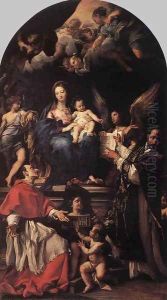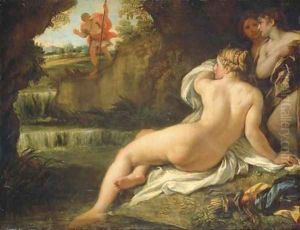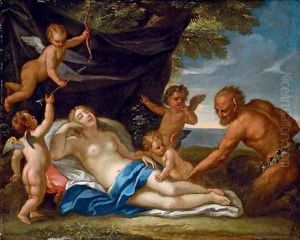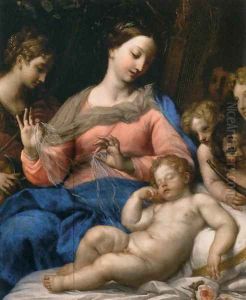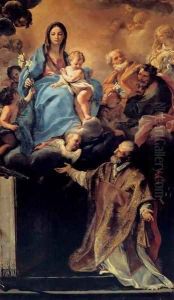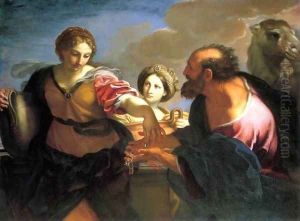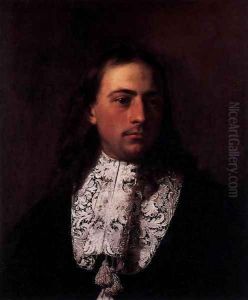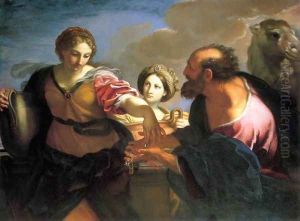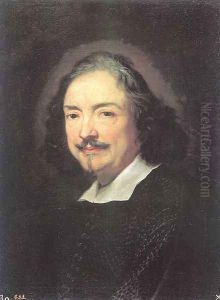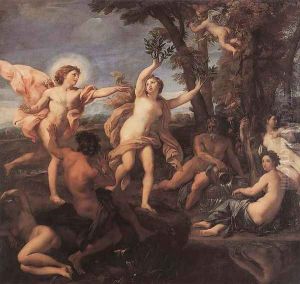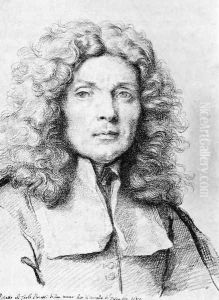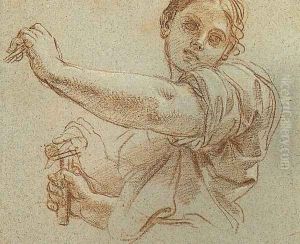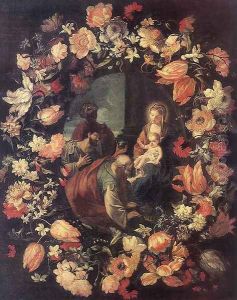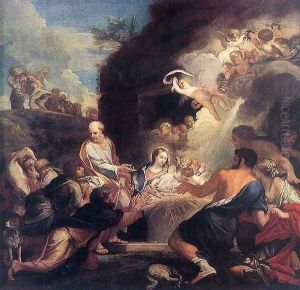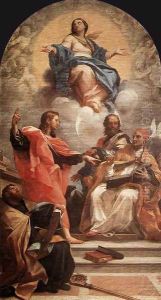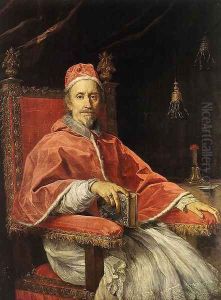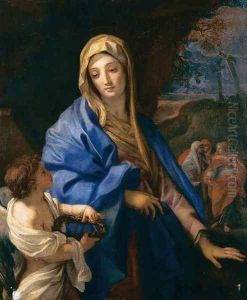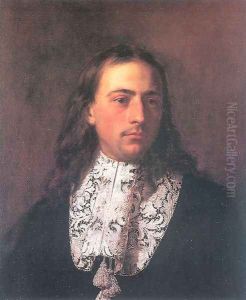Carlo Maratti Paintings
Carlo Maratti, also known as Carlo Maratta, was an Italian painter of the High Baroque period, celebrated for his classical style, which embodied the principles of the Counter-Reformation art in Rome. Born on May 13, 1625, in Camerano, a small town in the Marche region of Italy, Maratti developed an early interest in art. His talents were recognized, and at a young age, he moved to Rome to apprentice under Andrea Sacchi, one of the leading painters of the time. Under Sacchi's guidance, Maratti refined his skills and absorbed his master's emphasis on clarity, simplicity, and classical restraint, which stood in contrast to the more exuberant style of Baroque favored by artists like Pietro da Cortona.
Maratti's career flourished in Rome, where he became a leading artist of his generation, taking over the mantle from Sacchi. His works were characterized by their serene and idealized beauty, meticulous detail, and the harmonious integration of figures within well-considered compositions. Maratti was particularly adept at religious and mythological subjects, creating numerous altarpieces, frescoes, and paintings that were revered for their devoutness and emotional depth. Among his most famous works are the 'Assumption of the Virgin' in the Church of Santa Maria del Popolo in Rome and the frescoes in the Chapel of the Holy Sacrament in St. Peter's Basilica.
Beyond his paintings, Maratti was deeply involved in the artistic community of Rome. He played a significant role in the Accademia di San Luca, the prestigious academy of artists, and was instrumental in the establishment of regulations that helped maintain high artistic standards. His influence extended to the restoration and preservation of older artworks, including those by Raphael, and he was often consulted on matters of artistic importance by the papacy and the Roman aristocracy.
Maratti's style, which sought to revive the grandeur and simplicity of Raphael's Renaissance art, positioned him as a counterpoint to the more dynamic Baroque artists of his time. This classical approach found favor with many patrons and helped to shape the direction of Roman art into the early 18th century.
Maratti's impact on the art world persisted even as tastes began to shift towards the Rococo and later neoclassicism. His workshop was a center of training for young artists, and through his students, his influence spread throughout Italy and beyond. Carlo Maratti died on December 15, 1713, in Rome, leaving behind a legacy as one of the last great painters of the Baroque era, whose works continued to inspire admiration and study for their beauty, technical mastery, and devout expression.
